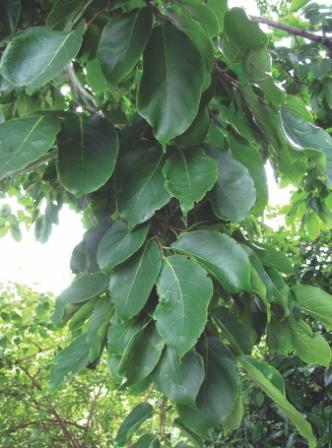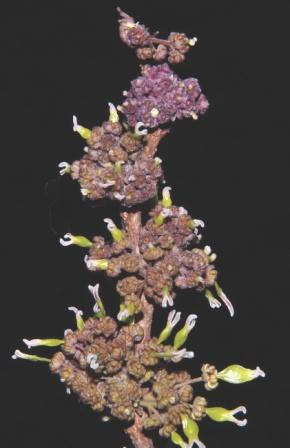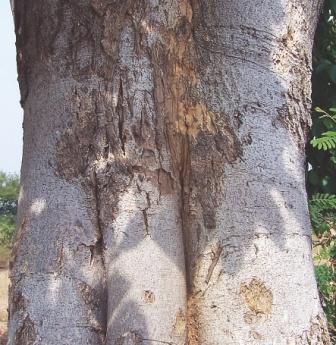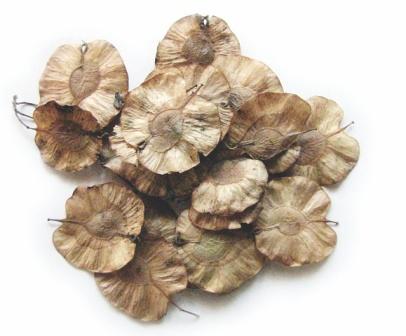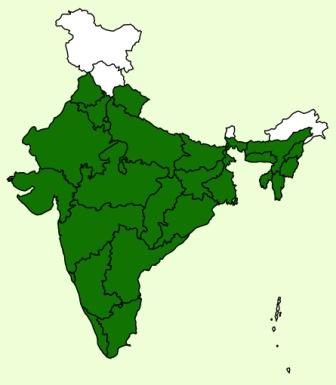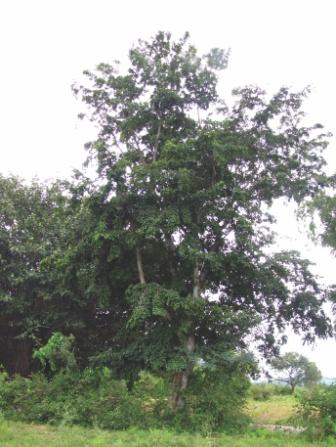Natural Regeneration :
- Naturally seeds are dispersed by winds in summer months and germinate in rainy season.
Artificial Regeneration :
- Propagated by nursery raised seedlings.
Seed collection and Storage :
- The fruits ripen in April – May.
- The seeds are separated from the fruit, dried and stored in gunny bag.
- Seeds rate is 27000/kg
- Fresh seeds has high germination capacity up to 60 %
- Reddish brown seeds are healthy and give more germination.
Seed Treatment :
- No seed treatment is required.
Nursery Technique :
- The seed are broadcasted in mother bed during April and May.
- Germination starts in a week and complete in a month.
- Beds are regularly watered and weeded.
- Seedlings are sensitive to drought and frost
- 3-4 months old nursery raised seedlings are fit for planting.
Plantation technique :
- Pits of size 45 cm3 are prepared at a spacing of 3 m × 3 m. The pits are weathered and refilled with topsoil after mixing with 10 kg FYM per pit.
Care & Disease Control :
Irrigation
- Responds well to irrigation however essential only during the first one or two years so as to ensure better establishment and quicker culm production. Moisture retention through trenches to be practiced.
Weeding:
- Weeding should be done at the nursery stage and followed up to 2 year for better growth
Irrigation :
For proper growth and survival it is necessary to give one or two waterings after planting. This is specifically required in arid regions. Irrigation after planting is not a prerequisite in areas having sufficient soil moisture and precipitation. Higher survival rate and better rate of growth is reported when soil and water conservation measures are also adopted.
Recommended Harvest :
Major uses :
- Wood is used for indoor building purposes, low cost furnitures, cabinet work, and carving.
- It is suitable for plywood, paking cases, match boxes and splints and papr pulp.
- Leaves are lopped for fodder.
- It is useful tree for afforestation of rocky stream banks and ravine lands.
Other uses :
Edible Uses
The unripe fruit is eaten
Medicinal
The bark and leaves are used for treating oedema, diabetes, leprosy and other skin diseases, intestinal disorders, piles and sprue. A poultice of the bark and leaves is applied topically to treat boils, swellings and rheumatic pains. The bark is used externally as a treatment for rheumatism, ringworm, scabies, ulcers and scorpion stings. The mucilaginous bark is boiled then the juice is squeezed out and applied to rheumatic swellings; the exhausted bark is then powdered and applied over the parts covered by the sticky juice.


